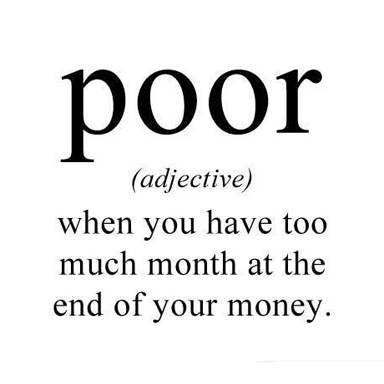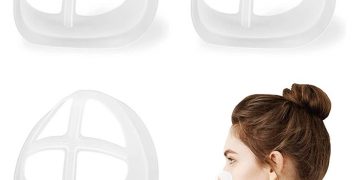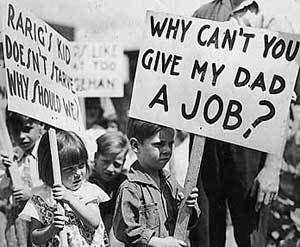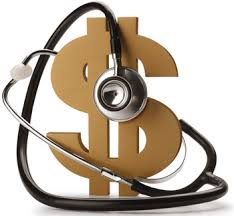With healthcare costs rising every year, just about everyone is looking for different ways to save money on their monthly health insurance premiums. One of the best ways to achieve this goal is to get an HDHP (high deductible health plan) attached to an HSA (health savings account). Created in 2004, they are one of the newest health insurance options around, so it’s quite understandable that not many people know what an HDHP is and how it works. Let’s dive right in.
What is A High-Deductible Health Plan (HDHP)?
The official definition of a high-deductible health plan (HDHP) given by the IRS (Internal Revenue Service) for the year 2023 is a health plan that demands at least $1,500 as deductible for one person or at least $3,000 as deductible for a family. A deductible is simply the amount of money an individual or family has to pay before an insurance company pays for any kind of health expenditure.
This definition also states that the maximum deductible an individual can pay from should not be higher than $7,500, while the maximum a family can pay should not be more than $15,000. However, it should be noted that the greatest amount an individual or family can pay per year for their medical expense covered by their insurance plan is on an annual, calendar year basis.
So, for the entire year from January 1 to December 31, these amounts are the maximum that insured individuals under these plans are allowed to pay. That does not include insurance premiums or the costs of the plan itself.
To be a little more direct, you can define a high-deductible health plan (HDHP) as any kind of health plan where there is an increased deductible and reduced monthly premiums compared to traditional health plans. You will most often see this with your employee benefit plans during open enrollment with your employer.
Why Do People Choose A High-Deductible Health Plan?
There are several reasons why someone might choose a high-deductible health plan. The premium that you pay per paycheck is usually significantly lower with HDHP plans when compared to other plan types, however, when you go to the doctor you will be responsible for the full cost of the visit and not just a copayment (when in network) or coinsurance (when out of network).
You will continue to pay the full cost of your visit and medications until you reach the maximum out of pocket expense for the year. This is often referred to as the “first dollar” rule where the insured pays all of the first dollars up to the HDHP limits before the employer pays.
Using Your Health Savings Account With Your HDHP
So far, you probably are wondering why anyone would be okay with making several thousands in deductible payments. That may sound like it might be a bad deal, however, individuals with a high-deductible health plan (HDHP) can link it to a Health Savings Account (HSA) which enables them to save for medical expenses in tax free accounts which also have significant benefits as well.
Those benefits include portability from your job to your own account, no expiration of the funds like with flexible spending plans, the option to invest the money, potential employer contributions into the account, and the ability to use funds within the HSA towards retirement. The table below shows HSA contribution limits and HDHP out of pocket maximums.
| Contribution Type | Self Only | Family |
|---|---|---|
| HSA Maximum Contribution | $3,850 | $7,750 |
| HSA Maximum “Catch-up” Contribution (individuals age 55 or older) | $1,000 | $1,000 |
| HDHP Minimum Deductible | $1,500 | $3,000 |
| HDHP Maximum Out-of-Pocket Expense | $7,500 | $15,000 |
2023 High Deductible Health Plan Limits
You’ve just learned that a high-deductible health plan (HDHP) requires a high annual deductible payment from you and that before the insurance company will start paying your health expenses under this plan, you must use your own out-of-pocket funds to pay your deductible.
However, this doesn’t necessarily make traditional health plans cheaper. Between higher healthcare insurance premiums, copayments when in-network, coinsurance when out of network, and annual deductibles, traditional medical plans are not exactly free and may cost you more in the long run.
Reimbursing Your Costs
Once you incur costs, you can submit a reimbursement request from your health savings account (HSA) or a health reimbursement arrangement (HRA) if your employer has sponsored one. It is not possible to use the Health Savings Account funds to pay for the high-deductible health plan (HDHP) monthly premiums. It is also possible for an employer to decide to contribute an extra amount to a worker’s Health Savings Account.
Health Reimbursement Arrangements (HRA) will also be paid by an employer to allow their employees to reimburse themselves for any health expenses incurred with a tax-free fund. It is possible that for a worker to participate in Health Reimbursement Arrangements, the worker might be required to sign up for a high-deductible health plan (HDHP). Sometimes, the employee’s family might also be required to sign up for the HDHP. Unlike HSA, you can decide to use your HRA funds to pay for your HDHP monthly premiums.
Advantages and Disadvantages of a High Deductible Health Plan (HDHP)
Advantages
- Reduced Monthly Premiums: Compared to most traditional health plans, high deductible health plans often require low monthly premiums. This is a good choice for people who see themselves needing only preventive health care as this is covered at a hundred percent for most HDHPs when it is kept in-network. Also, when you think about it long term, you will also be able to save money because of the reduced monthly premiums.
- Tax-Free Spending Account: It is possible to find a high-deductible health plan that can be combined with a health savings account. This action will entitle you to tax-free funds to pay for some health expenses. Also, any funds credited to a health savings account are tax-free, so it helps save money as well.
- Tax Credits: Many people feel like they are placed out of affordability and won’t be able to afford any type of health plan. If you find yourself struggling with your tax burden, then it may make sense to get an HDHP as a bare minimum. Since this is a tax credit, it can pay off well during tax season.
- Avoiding Bankruptcy: It’s no secret that medical costs are soaring in the United States. In fact, the chaos of COVID-19 left many with medical bills over $600,000. Hospitals have been known to sue people who can’t pay their bills. High deductible health plans offer an emergency bulwark against medical bills that otherwise would drive you to bankruptcy.
Disadvantages
- Greater Deductible: As the name implies, a high deductible health plan will get you a higher deductible compared to traditional plans. This implies that you will be required to pay your health expenses out-of-pocket till you reach the set amount for your higher annual deductible before the insurance company can pay for any of your health expenses. However, this does not include preventive health care, which is often covered at a hundred percent under most HDHPs when it is kept in-network.
- Expensive Out-of-pocket Health Costs: Going for a high deductible health plan means that you are required to pay all your deductible before the insurance company even starts to pay for your health costs, so if the health care you need is not preventive, then you have to use out-of-pocket funds to pay your deductible in full. So this is a bit of a disadvantage for people that need non-preventive health care.
- Less Coverage: Though this is not always a rule, low-deductible health plans tend to have more products, services, and medicines covered as a part of their insurance.
Trends In High Deductible Health Plans for 2023
High deductible health plans, much like most other parts of the health insurance industry, are always changing. This means that you need to be aware of some of the different ways that health insurance can change for the better or worse. According to the most recent studies, here is what you should be aware of when you’re picking your insurance:
- Most HDHPs are going to go up in price when it comes to pandemic-related costs. This shouldn’t be surprising, since COVID-19 put a huge strain on the insurance industry. The most recent statistic shows that premium loads have increased 8.4 percent to cover for the damages done by the COVID-19 pandemic.
- Your deductible will be higher than it was last year. The minimum deductible for 2020 was around $1400 for a single person. This year, the deductible will rise to $1500.
- There is a good chance that you might be able to save on more preventative care. The trend of insurance companies offsetting preventative care costs continues to grow. Lately, companies have started to offer greater offsets for people who have gym memberships, fitness devices, and shots. Some companies are even offering a free healthy food credit!
- You are also not alone if this is the first year you are considering a high-deductible healthcare plan. This type of coverage has seen record-breaking interest since 2020, and that trend is only starting to kick off.
- If you are low- to moderate-income, then you might also get some tax help. There are several national programs that can make this coverage more affordable for you if you cannot afford the entire price tag. It’s best to talk to an insurance assistant through your state or federal insurance marketplace portal to find out what you are qualified for.
























